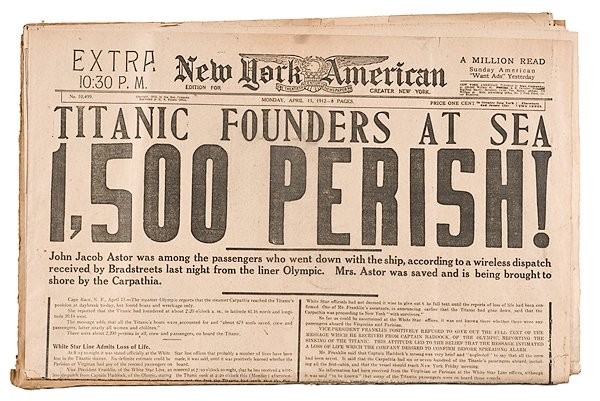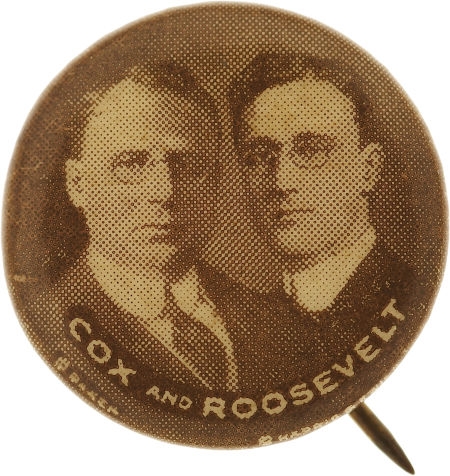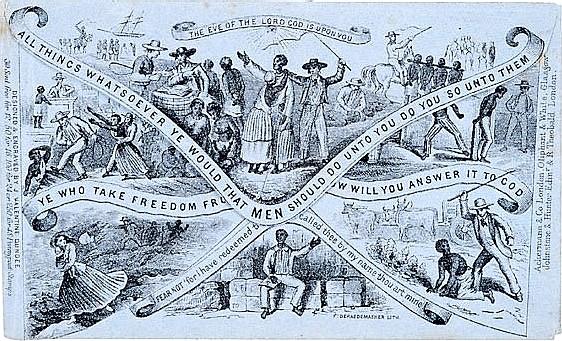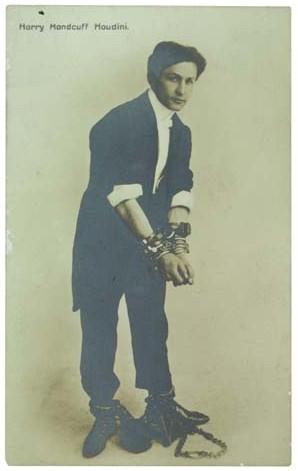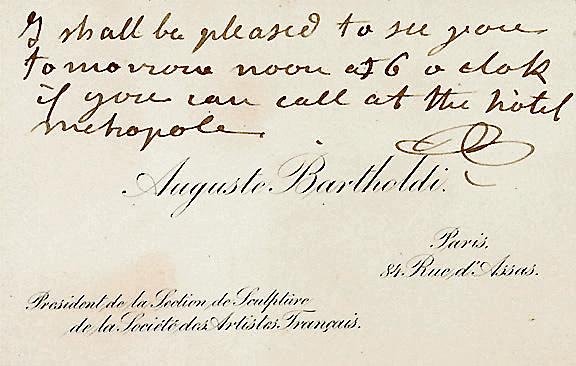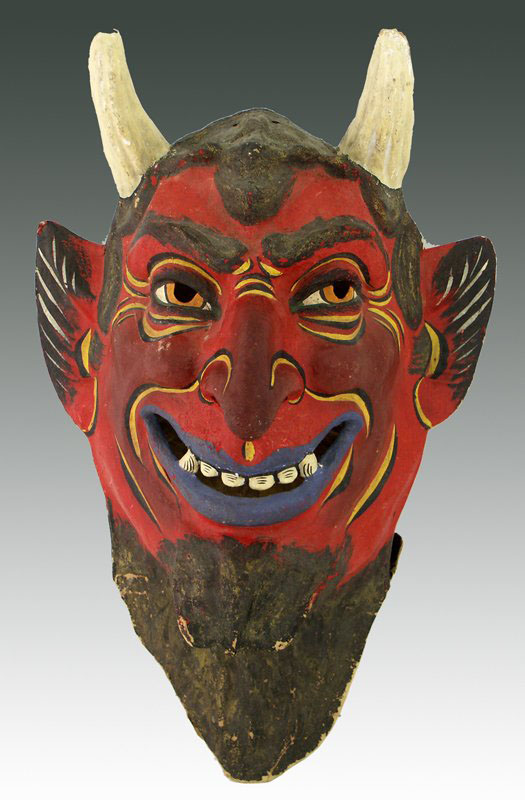April 13, 2012 – Unless you’ve been at the bottom of the ocean yourself, you probably know that this month marks the 100th anniversary of the sinking of the RMS Titanic. So perhaps it’s no surprise that we’re seeing an increase in searches for objects related to the ill-fated ocean liner. Of course, there are the obvious things, like identification plates from one of the Titanic’s lifeboats, the New York American newspaper’s first account of the sinking, and a first-hand account of the RMS Carpathia’s rescue of the Titanic’s passengers, but there’s also been an increase in interest in movie-related memorabilia, including the dramatic posters from the 1959 movie, A Night to Remember, and a prop table from James Cameron’s blockbuster. Whether it’s the historical version or the fictional one, one thing is certain – the tragedy seems to continue to hold the world, the marketplace, and our searchers in thrall!
You are currently browsing the archive for the Ephemera category.
Presidential campaign and political memorabilia comes in a variety of shapes and sizes, but few items are as popular as presidential campaign pinbacks.
The History of Campaign Buttons and Badges
The first campaign buttons may be from around 1824 in the form of medals. These metal discs had holes punched in the top, and were worn on a string around the neck. In 1860, the invention of the tintype made Abraham Lincoln campaign badges possible.
During the 1896 race between William McKinley and William Jennings Bryan, celluloid buttons made their first appearance. These pin back buttons consisted of photographs and slogans printed on paper and covered with a thin layer of clear celluloid whish was held in place with a metal ring. The year 1916 saw the introduction of the tin lithographed button. This type of button was made by printing an image directly on a piece of tin and stamping out the circular form.
Most Collectible Presidential Buttons
Values for campaign buttons and Badges range from a few dollars to a few thousand dollars, based upon age and condition, popularity of the President, and the historical importance of the election. According to Ted Hake, renowned collector of political memorabilia, and founder of Hake’s Americana & Collectibles Auction, the most collectible U.S.
Presidents include:
Abraham Lincoln
Theodore Roosevelt
Franklin Delano Roosevelt
Harry Truman
John Kennedy
Ronald Reagan
Richard Nixon
Reproduction Political Buttons
Many, many campaign buttons have been reproduced over the years, and since tin lithography and printing techniques haven’t changed that much in terms of the appearance of the finished products, both sellers and buyers should be wary of spending or expecting large sums for buttons unless their provenance can be verified.
-By p4A Contributing Editor Susan Cramer.
Reference & Further Recommended Reading:
To search the Prices4Antiques antiques reference database for valuation information on hundreds of thousands of antiques and fine art visit our homepage www.prices4antiques.com
…a continuation of Origins of Postcards
Uniform Postal Rate
In 1840, British Postal authorities inadvertently paved the way for the widespread use of postcards with the Uniform Postal Rate. For one penny, it was now possible to contact friends and relatives anywhere within the realm. Before this time, postage was charged for the envelope as well as its contents. Envelopes became highly decorated, and included illustrations of historic events, domestic scenes, and travelscapes.
Postcards for Businesses
By 1868 or so, business began using postcards to announce their wares as well as inform store owners of upcoming salesman visits. There is serious debate as to the identity of the inventor of the first non-commercial postcard. Some say it was Dr. Heinrich von Stephan, a post office official from Germany. Others claim they were introduced by Dr. Emanuel Hermann of Vienna. Regardless of the name of the actual inventor, postcards changed the nature of domestic communication. Limited space made florid speeches impractical, and lengthy endearments and descriptions gave way to brevity.
Postcards for the Masses
The popularity of the postcard seems to have coincided with the growth of the foreign travel industry on the continent. For the first time, travel was within the reach of those of moderate means, thanks to companies like Thomas Cook & Son, who developed and organized affordable tours to exotic locations such as Egypt and the Middle East. These companies printed their own postcards, and were highly popular with tour participants.
One of the earliest full color postcards was a Christmas Greeting printed in 1870 in England, which lead to New Years and other holiday greetings, and comic cards.
The Postcard Craze
By 1898 the postcard trade was booming. Not only were they used by travelers and well wishers, postcards were an important means of communication in the days before widespread availability of telephones. A visitor might send his host a half-penny card informing him of plans for an upcoming visit for afternoon tea. The picture postcard was the most popular, and huge quantities have survived. People told each other to “Drop me a card” the same way that people today say “give me a call.” The Victorians brought postcard collecting to a high art, with the head Victorian, Queen Victoria herself an avid collector (as the Queen, she had people to do her actual collecting, but enjoyed perusing the albums none the less). The most beautiful and highest quality cards were still printed in Germany, but every country had their manufacturers, and were produced in every conceivable material including wood, and decorated with fabric, feathers, thread, and even real hair. Although every county had its cards, themes were universal; royalty, patriotic and holiday themes, and especially beautiful women, with or without revealing clothing.
Real Photo Cards
Real photo postcards appeared on the scene as early as 1900, and are still in use today. Popular subjects included current events, armies, street scenes, modes of transportation, special events, fairs and festivals, celebrities, royalty and world leaders at work or play, disasters such as floods or plane crashes, and of course, beautiful women. Especially popular with collectors were photos of stage and theater stars. Real photos, especially those produced in limited quantities command the highest prices of all collectible postcards, although sometimes their value tends to be regional. Content also affects value. A sad truth is that a real photo postcard of a Klu Klux Klan lynching would command a higher price than a real photo card of, say Hamilton Avenue in Glen Ridge, New Jersey.
-By p4A Contributing Editor Susan Cramer.
Reference & Further Recommended Reading:
To search the Prices4Antiques antiques reference database for valuation information on hundreds of thousands of antiques and fine art visit our homepage www.prices4antiques.com
Greetings Postcard Collectors!
Few collectibles tell us as much about daily life and domestic and social history as paper ephemera, and no paper is easier to find, or more beautiful than the postcard. A postcard is a roughly 3 x 5 piece of pasteboard with a picture on the front, and a message from someone you never met on the back that speaks volumes about life in its day. Although these days postcards tend towards the envy inducing “having a wonderful time, too bad you’re not here” variety, in the days before internet, telephone and even telegraph, postcards were an important method of communication. Collectors of paper ephemera are of necessity a special breed, collecting as they do, objects with little intrinsic value.
Visiting Cards
Of all types of written communication, postcards seem to have changed the least. Not surprising for a product that was developed through evolution rather than invention. Postcards are believed to have begun being used in the 18th century in the form of visiting cards, a pre-printed pasteboard the size of a playing card. These included elaborate engravings of city or classical scenes with elaborate borders and space reserved for the senders name and message. In time, the owners name would be printed on the card. These cards were produced by the best artists of the day, and their craft is obvious in the surviving examples.
Trade Cards
In the late 18th century, British merchants began using one sided, preprinted card to advertise their wares. The opposite side was used for a customer’s bill. These cards were elaborately engraved mini-artwork with lengthy descriptions of the goods for sale.
Writing Paper
In the early 1800’s, high quality writing paper came on the scene in England. Unlike today’s standard 8 ½ x 11, this paper came in quarto or octavo size, and was headed with an elaborate embossed design at the top and intricate borders as well. From there, came the fashion for writing paper engraved at the top with a scene of resort in which the writer was staying. These lithographs and engravings were so beautifully done that the recipient often cut off the illustration and placed it in an album. Because of this, intact examples are difficult to find, but many of the illustrations have survived.
-By p4A Contributing Editor Susan Cramer.
Reference & Further Recommended Reading:
To search the Prices4Antiques antiques reference database for valuation information on hundreds of thousands of antiques and fine art visit our homepage www.prices4antiques.com
One of the most common questions in the antiques marketplace is, “What’s hot right now?” At Prices4Antiques.com, we’re seeing a scary number of searches among our Halloween collectibles. This week, we’ve seen searches for a toy witch riding a motorcycle, the classic jack o’ lantern candy pails, a German papier-mache devil’s mask, a string of jack o’ lantern lights, and another witch, this one traveling by rocket! These items were the ones viewed most frequently in our Halloween section, but, as always, people searched for thousands of other antiques and collectibles at Prices4Antiques.com!

